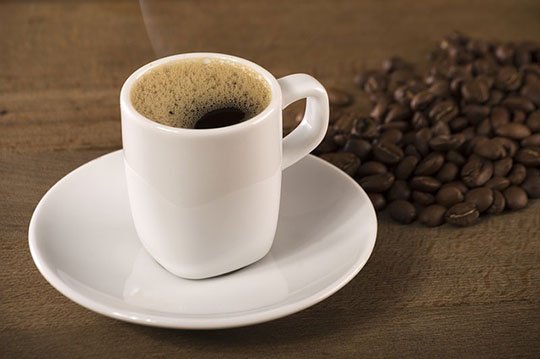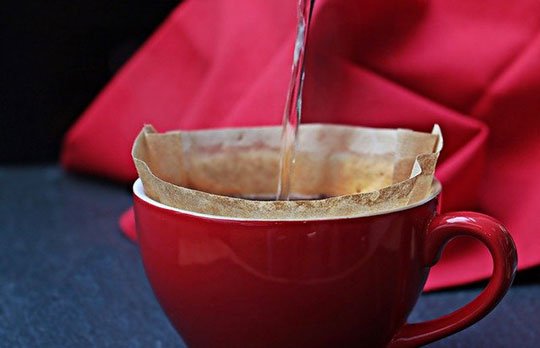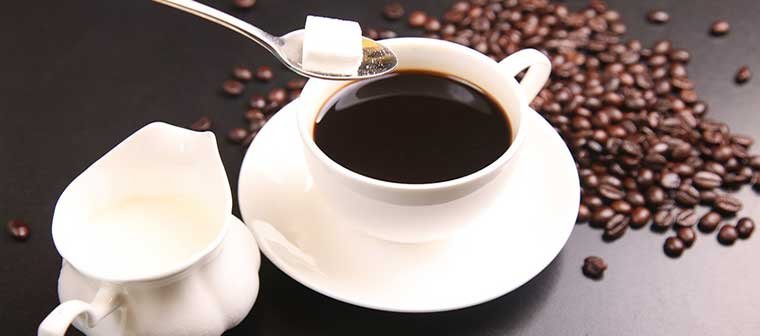A great cup of coffee can be made in your kitchen in less than five minutes and for an investment of just a few dollars. In the past, making great coffee at home seemed to take a lot of work. The machines were complicated, and if you messed up, no one could tell if it was because of user error or the machine itself. Fortunately, this no longer has to be the case. Today's coffee makers are precise instruments with clear instructions.
Thanks to advanced technology, you can bring quality single-cup brewing systems into your kitchen! If you cannot afford a modern coffee maker, worry not, as this should not prevent you from enjoying your favourite cup of Joe! Making delicious espresso-based drinks has never been easier or more convenient than today's many different options. For those who want to do as much from scratch as possible, there is no denying that the various coffee brewing methods that we have today have revolutionized the way you enjoy coffee!
In this article, we shall look at the simplest ways to make coffee while at home or work using either a modern coffee maker or traditional methods while factoring in the coffee to water ratio for the best outcome! Read on and learn how to make coffee today!
The Best Coffee Machines that You Can Buy Online.
Extensively Reviewed by a Coffee-Enthusiastic.

How To Make Coffee With A Modern Coffee Maker

Coffee shops have been popping up everywhere in recent years. They are a great way to purchase, and of course, consume, your favorite morning beverage without the hassle of making it yourself at home. But for those who don't want to leave their house in the morning, there is another way! Coffee Makers are a more or less standard item in most kitchens today.
The makers themselves have also become more complex than they once were. Today's best devices combine features with advanced functions previously exclusive to commercial operations and upscale restaurants. Most coffee makers come with an automatic timer that allows you to set when you want your machine to begin collecting water and grinding coffee beans together so that both are ready at the same time with which to start making your coffee.
There are many different variations on homemade coffee solutions. Other features include a thermostat that allows you to set the desired temperature for heating water and a self-cleaning function used after each brew to keep the machine clean by removing any residual grounds or stale oils. Below let us look at how to make coffee with a modern coffee maker!
What You’ll need
- Coffee beans
- A modern coffee maker
- Water
- Sugar
- Milk (optional)
Instructions:
- Grind the coffee beans to make them easier for the machine to process. The consistency should be like the size of sand.
- Measure out the amount of coffee you want by using one tablespoon per cup of water. Some people swear that a finer grind will make stronger coffee, but it's just about personal preference.
- Pour the ground beans into your filter, and add the proper amount of water - between 1/2 and 2 cups depending on how many coffees you plan on making.
- Close your machine and set your timer according to its instructions, usually somewhere between 4-8 minutes.
- When time is up, pour your regular amount or decaf into a mug with some hot milk if you like it that way.
- Enjoy your cup of java!
How To Brew Coffee Without A Coffee Maker

There are many ways to brew coffee without a traditional coffee brewing machine. One of the most popular methods is percolating, which uses hot water and gravity to drip through finely grounded beans at a controlled pace. Many people also enjoy using their stovetop as an alternative way to make coffee because it is simple and affordable but can be messy if not cleaned up after correctly.
A French press or plunger pot will also work just fine for those who prefer finer grounds instead of coarser grinds. Having a stovetop espresso maker will more than often get the job done. There are a few different types out there, but we recommend using a stovetop Moka pot for the best results. During World War II, these were initially designed in Italy as an inexpensive way for civilians to make coffee without access to electricity or gas fuel as they were limited resources at the time.
Nowadays, they are still used throughout Latin America and Europe because of their ability to produce great-tasting coffee with relatively little effort involved. Some people think coffee tastes better if it is brewed by hand. They might be right, but when you don't have a coffee maker on hand and require some java ASAP, these steps will guide your way on how to brew coffee without a coffee maker!
What You'll Need:
- Coffee beans
- French Press
- Burr Grinder
- Filter
- Water
Instructions:
- Grind your coffee beans with a burr grinder until they become a fine powder.
- To make coffee in a French press, you will need to start with about two tablespoons of ground coffee for every cup that you plan on making.
- Measure out this amount, and then place it into the bottom chamber of the press.
- Pour in cold water, which should fill up to just below where the plunger locks into place at the top.
- Securely tighten down all three pieces (plunger lock knob, plunger rod, and upper base) after filling.
- Heat water until it boils; use enough so that it will fill up to just below the lip of the plunger rod when added to the dry coffee grounds.
- With the pot off and out of the way, you can slowly pour this hot water over your grounds.
- When you notice bubbles beginning to rise from your grounds, it is time to slowly push down on the plunger rod using a bit of elbow grease until it locks into place at about three-quarters in.
- Keep pushing till there is no more resistance; this should take about ten seconds. Doing so should allow most of the grounds to sink into the water after several seconds.
- Once all of your grounds sit at the bottom, turn on your stove burner again and start heating more water while waiting for a few minutes for the coffee to finish brewing.
- When you are ready, slowly pour the rest of your hot water into your French press pot and let it sit for a few minutes before drinking.
French presses are great to brew coffees with because they allow for a full immersion style brew that can preserve much more flavor than other brewing methods. With this method, even those who aren't typically fond of strong or bitter-tasting coffee will be able to enjoy a piping hot cup in no time. Try out various types of beans and grounds till you find something worth waking up for!
Importance Of Learning How To Make A Cup Of Coffee

Coffee is a staple drink in the morning. It is usually one of the first things we do when our feet hit the floor, and it goes well with breakfast, lunchtime snacks, or dinner desserts. However, we may have never given much thought to how coffee gets into that mug before now. Making your cup at home can be easier than you think and has a lot of advantages. Today let us look at the importance of learning how to make a cup of coffee.
- Saves Money
Learning how to do some carafe is a great way to save money on your morning commute, as you can drink it in the car on your way to work - or better yet, at your desk. Coffee shops are not always open early enough for breakfast, and this can be costly if they are part of your morning routine. It may take a bit more time to brew your cup of joe compared to ordering a latte or cappuccino at a coffee shop, but it is much cheaper! You can even make multiple cups.
- Saves Time
Making coffee at home saves time while still being enjoyable. It may take a bit of practice to get used to your coffee maker, but soon you will be making delicious cups of coffee as quickly as grabbing a cup from the local shop.
- Tastes Better
Your homemade brew will taste better than anything from a coffee shop or gas station! Think about how much money you are wasting on overpriced, watered-down drinks each week. Brewing coffee at home ensures that you have control over quality, quantity, and flavor. Often coffee shops use pre-ground coffee that has been sitting for a while; this makes your coffee taste stale and bitter. If you prepare coffee fresh at home, you can avoid this problem entirely than buying from a coffee cafe.
The Cold Brew Ratio
The perfect coffee to water ratio is a highly debated subject. Some people like it strong while others enjoy a more flavorful cup of joe, but what's the right amount? The best way to find out for yourself would be by experimenting until you get your desired taste and strength! Brewing the perfect cold brew coffee is a delicate balance.
The general opinion in making the perfect iced drink is to use a 1:5 water to grind ratio. This has proven time and again as being an effective strategy for creating a pleasant taste with just enough caffeine in your system without it overpowering or leaving any bitter aftertaste. The art of brewing up some deliciously refreshing cool caffeinated beverage can be challenging if not done correctly- but luckily, there are guidelines you can follow in measuring out your cold brew ratio.
What Are The Effects of Coffee To Water Ratio?

The coffee to water ratio is essential because it affects the taste of your coffee. Coffee has a distinct taste when the water to coffee ratio is modified. Furthermore, when you change this ratio, it causes your grounds to become less saturated with water which in turn causes over-extraction of tannins from the beans and under extraction of essential oils. If you use too much water, your coffee will be weak and not flavorful.
The optimal water to coffee ratio is 1:15, with the use of a French Press. If you increase your brew time, it will decrease your potential to extract caffeine from your coffee grounds. If you use too little water, your coffee will be stronger and more bitter. The optimal water to the coffee ratio for a drip brewer is 1:17. If you decrease your coffee brew time, it will increase your potential to extract caffeine from your coffee grounds, and the flavors of the beans will be more intense.
It is best to start with a 1-to-1 ratio of water to ground beans for a milder cup of joe. If you like a stronger coffee brew, cut the ratio in half to 1-to-2 or increase it to 2-to-1. For example, for half a cup of coffee, use one tablespoon of ground beans; if you want one cup, use two tablespoons of ground beans. Some experts suggest using an additional 1/3rd or so more coffee than water for every 12 grams (two tablespoons) of grounds. Try experimenting with different ratios until you find what works best for you!
The Best Coffee Machines that You Can Buy Online.
Extensively Reviewed by a Coffee-Enthusiastic.

Conclusion
We hope you all learned a few new tips on how to make coffee and have an easy morning routine. With just a little extra effort, you can enjoy an even better cup of joe every day! Make sure you are using the right coffee beans, grind them to the correct consistency, and brew at a high enough temperature. Also, experiment with different ratios of coffee-to-water until you find your favorite cup!
As a coffee enthusiastic Dave share with you his latest and greatest coffee news and insights. He es always interested in trying out new things about the best bean of the world!
More Posts in this Category:


